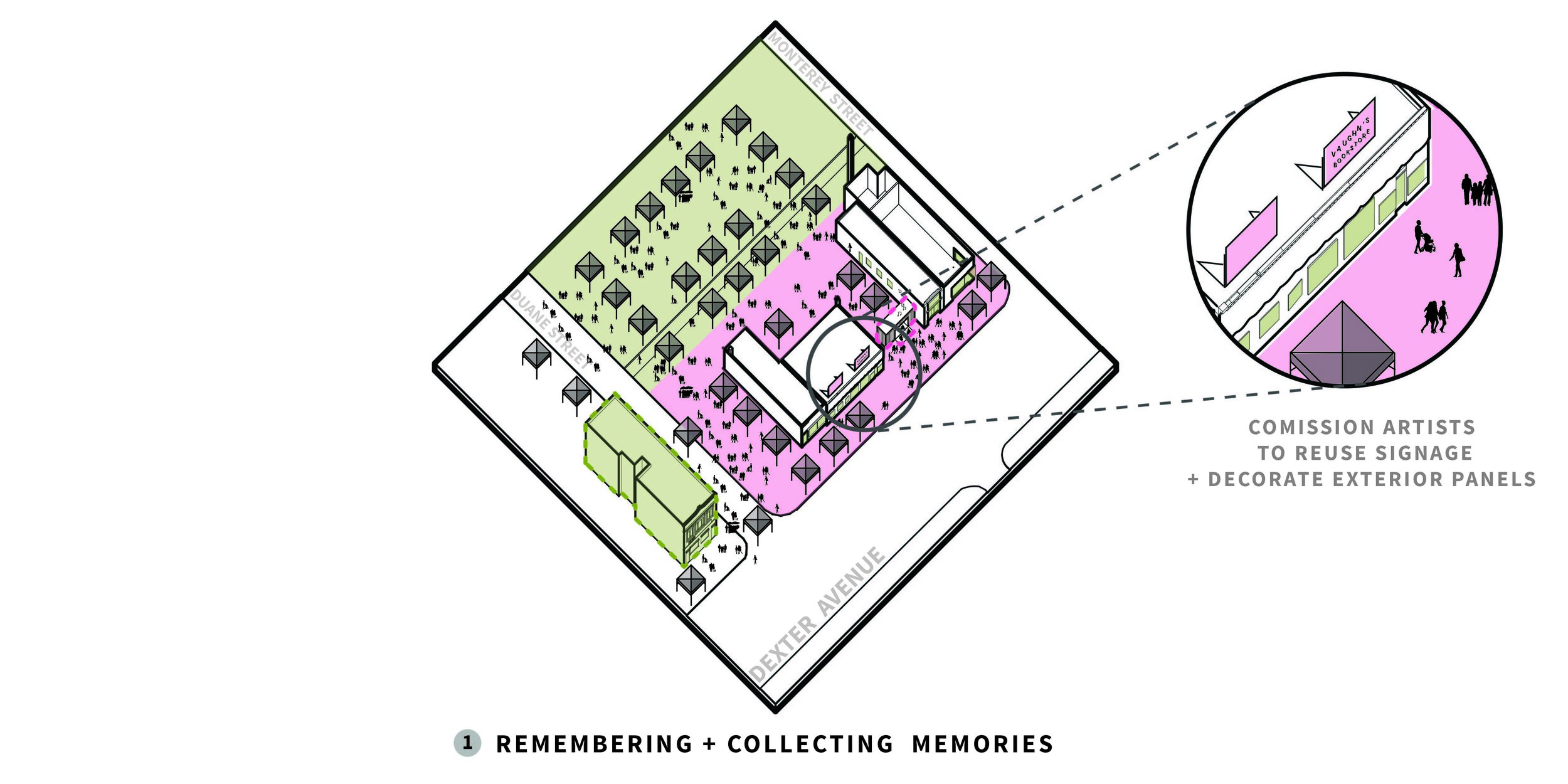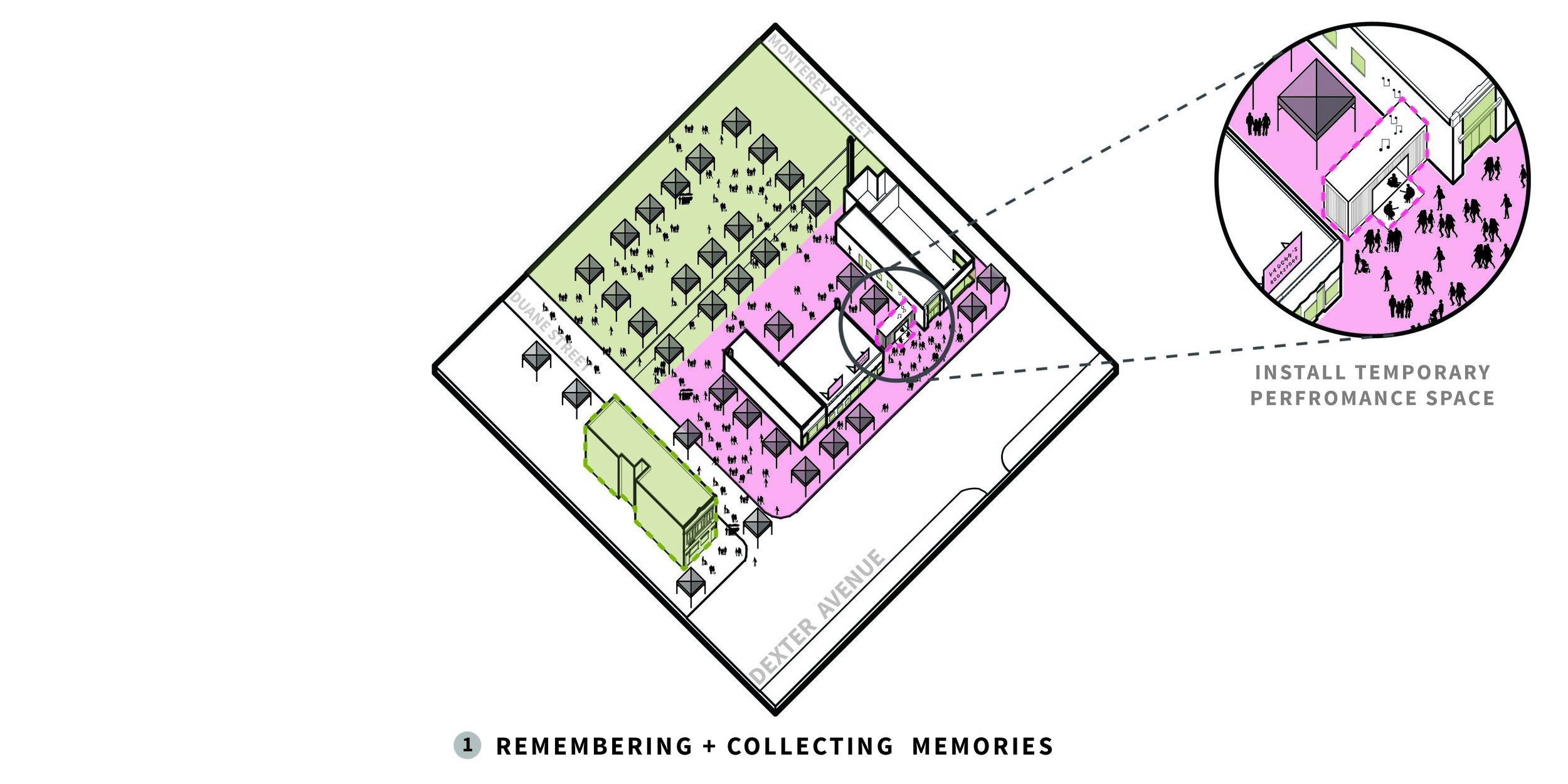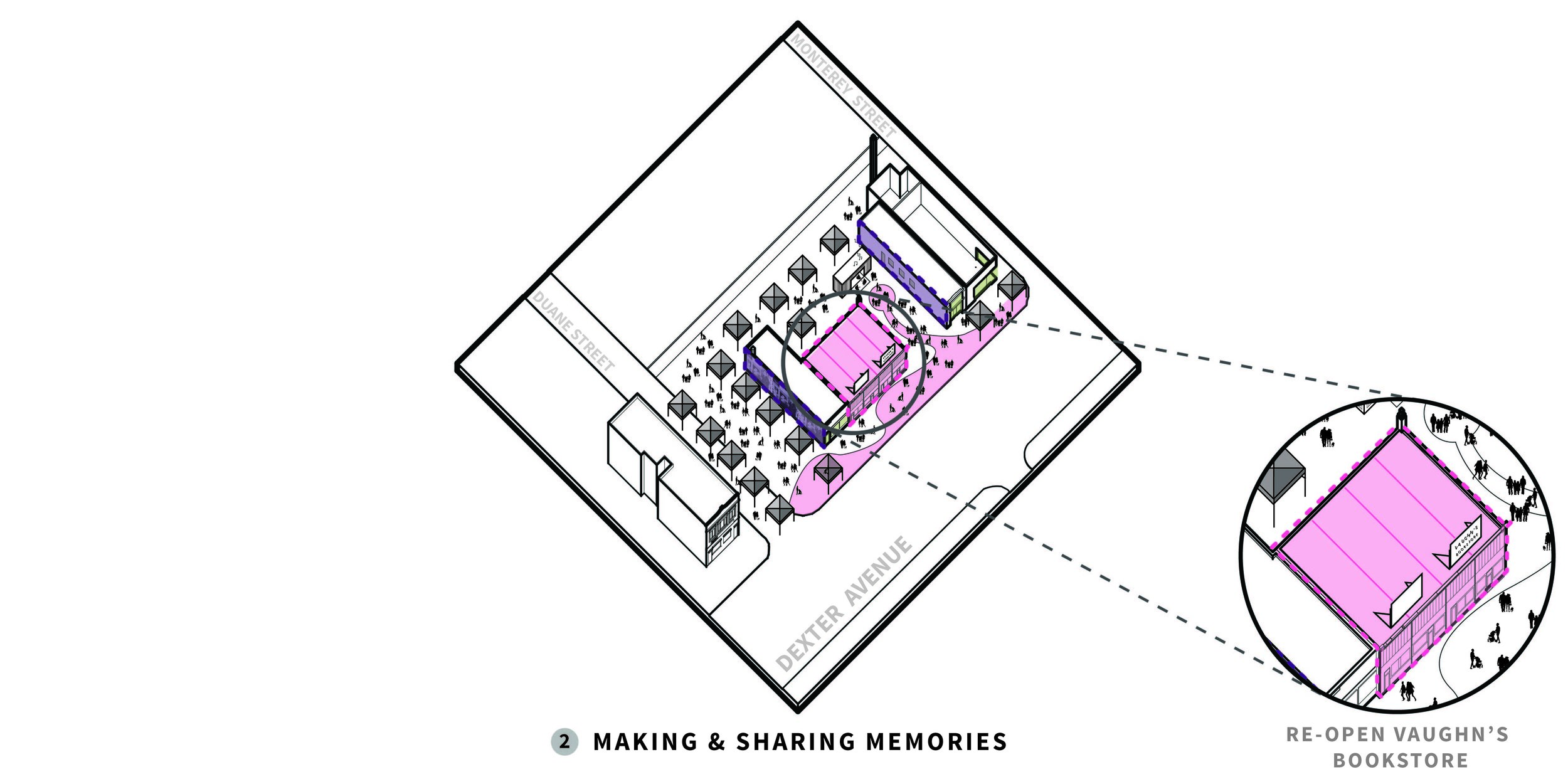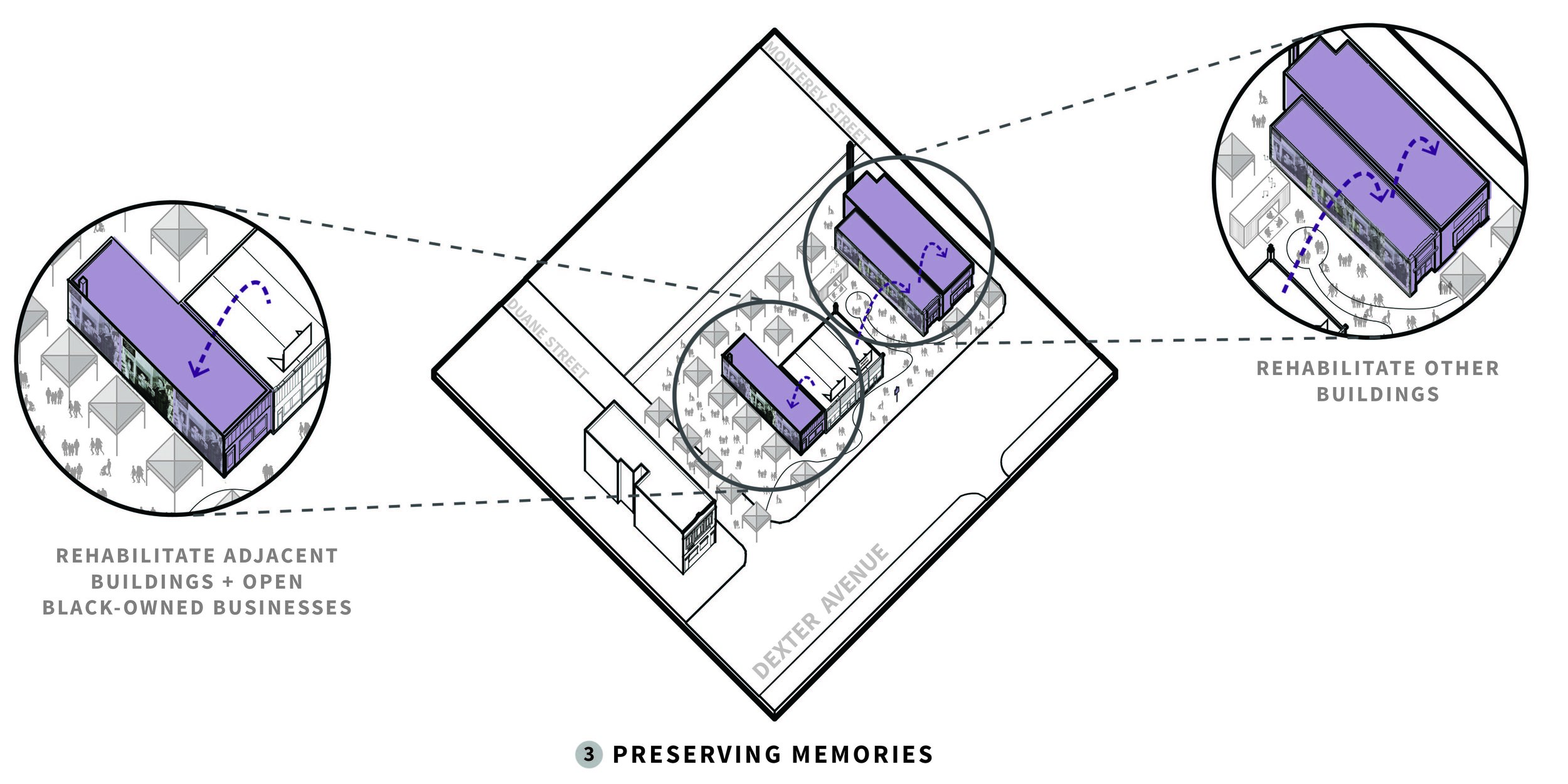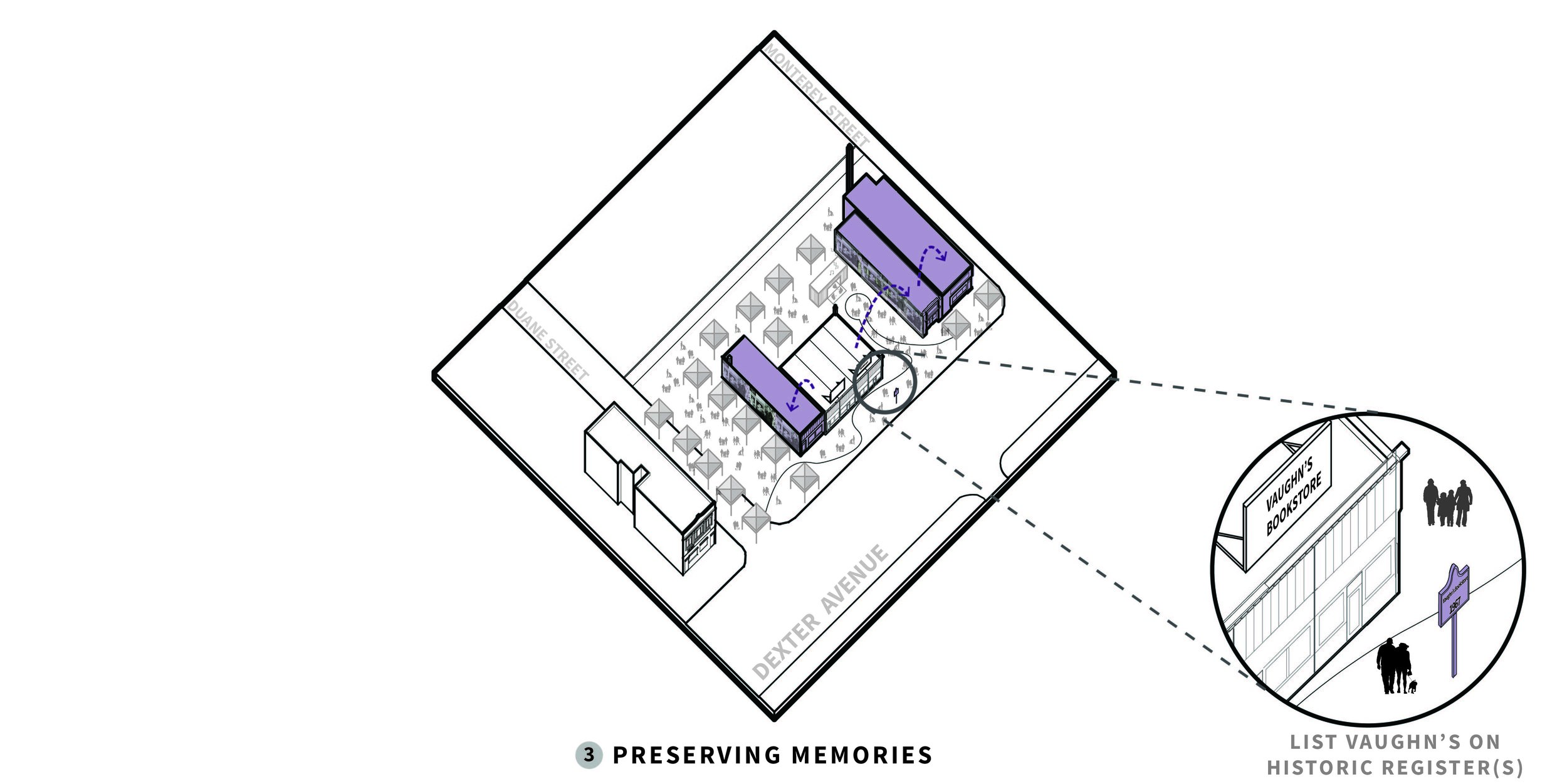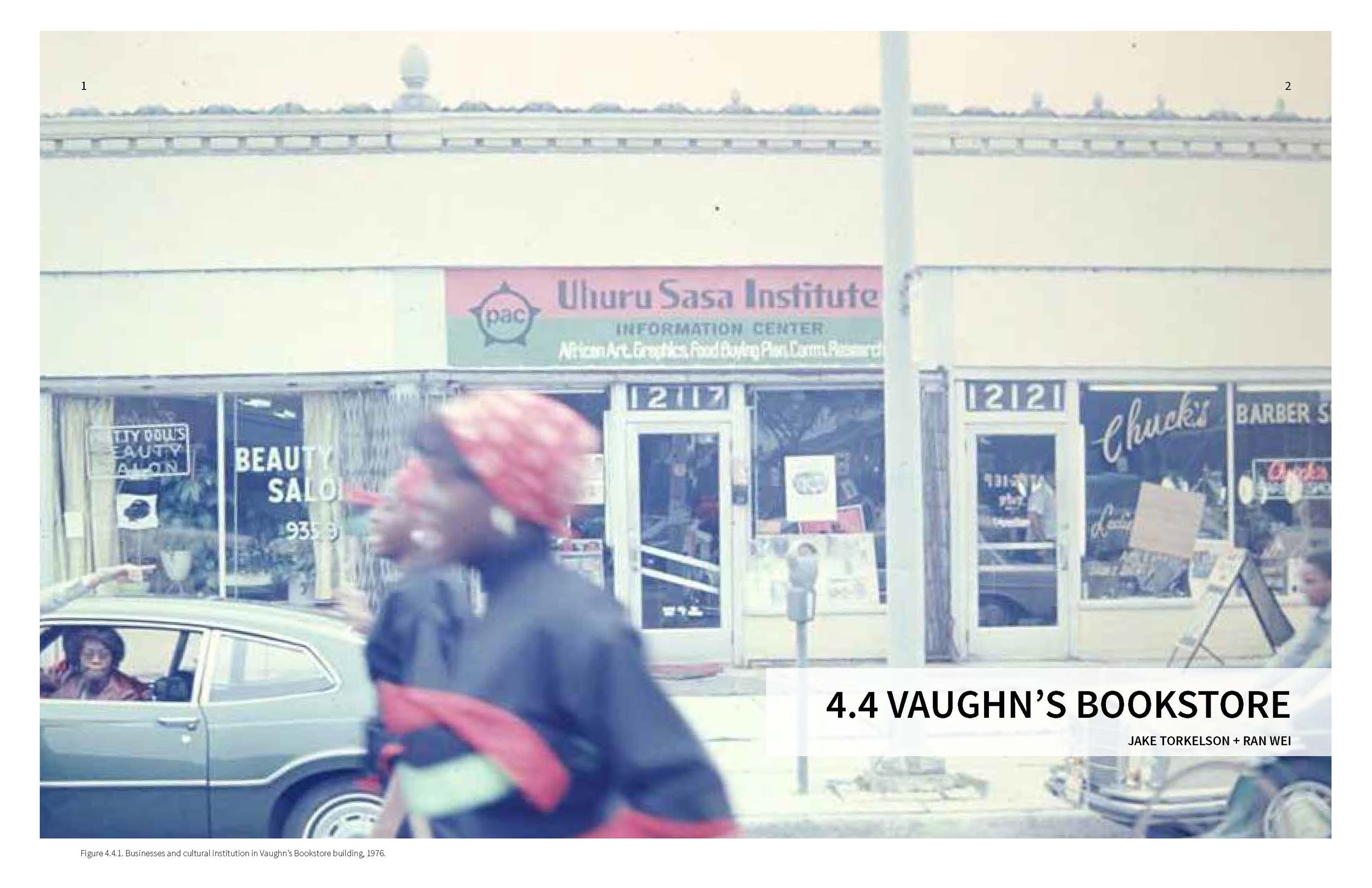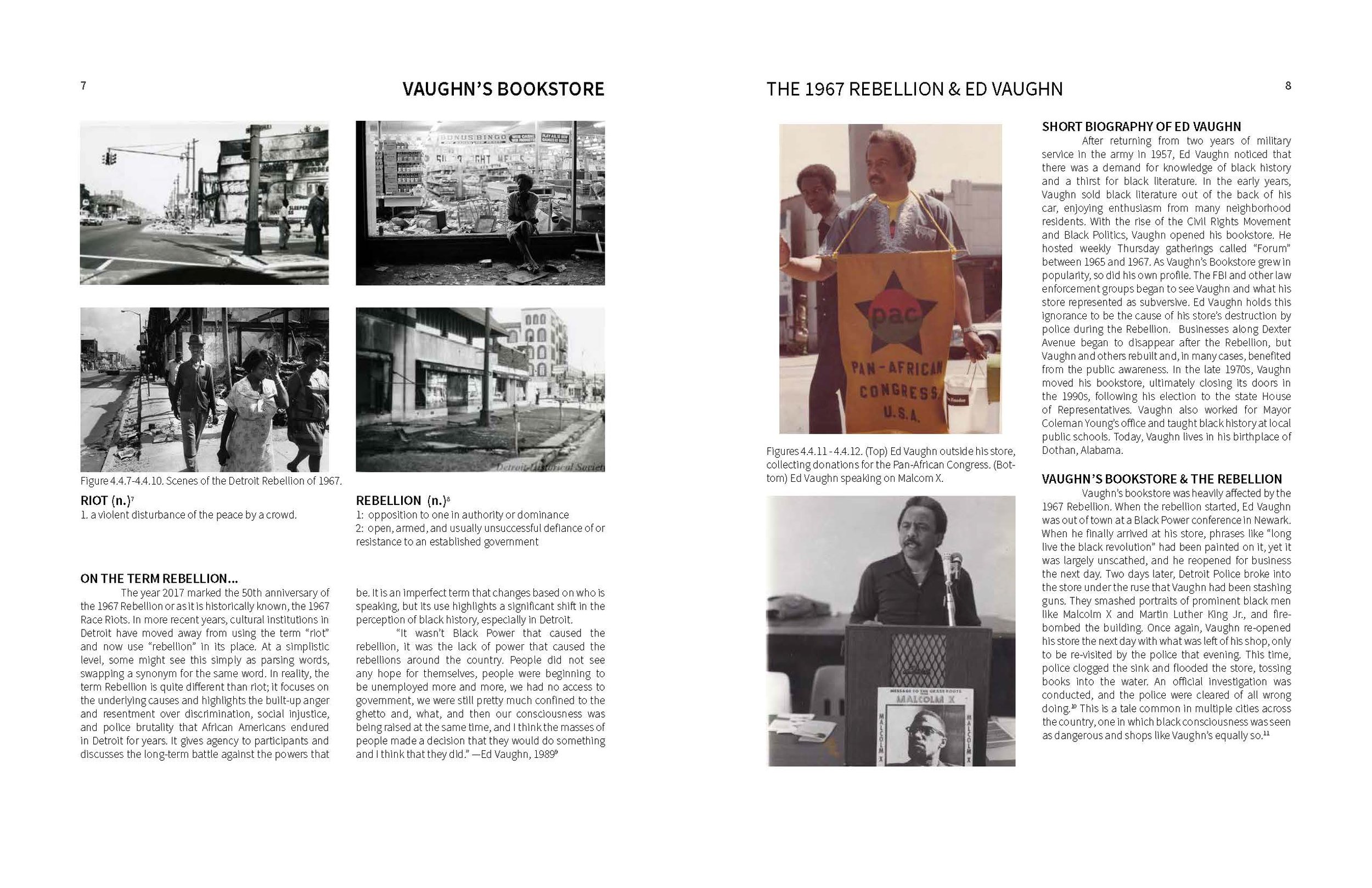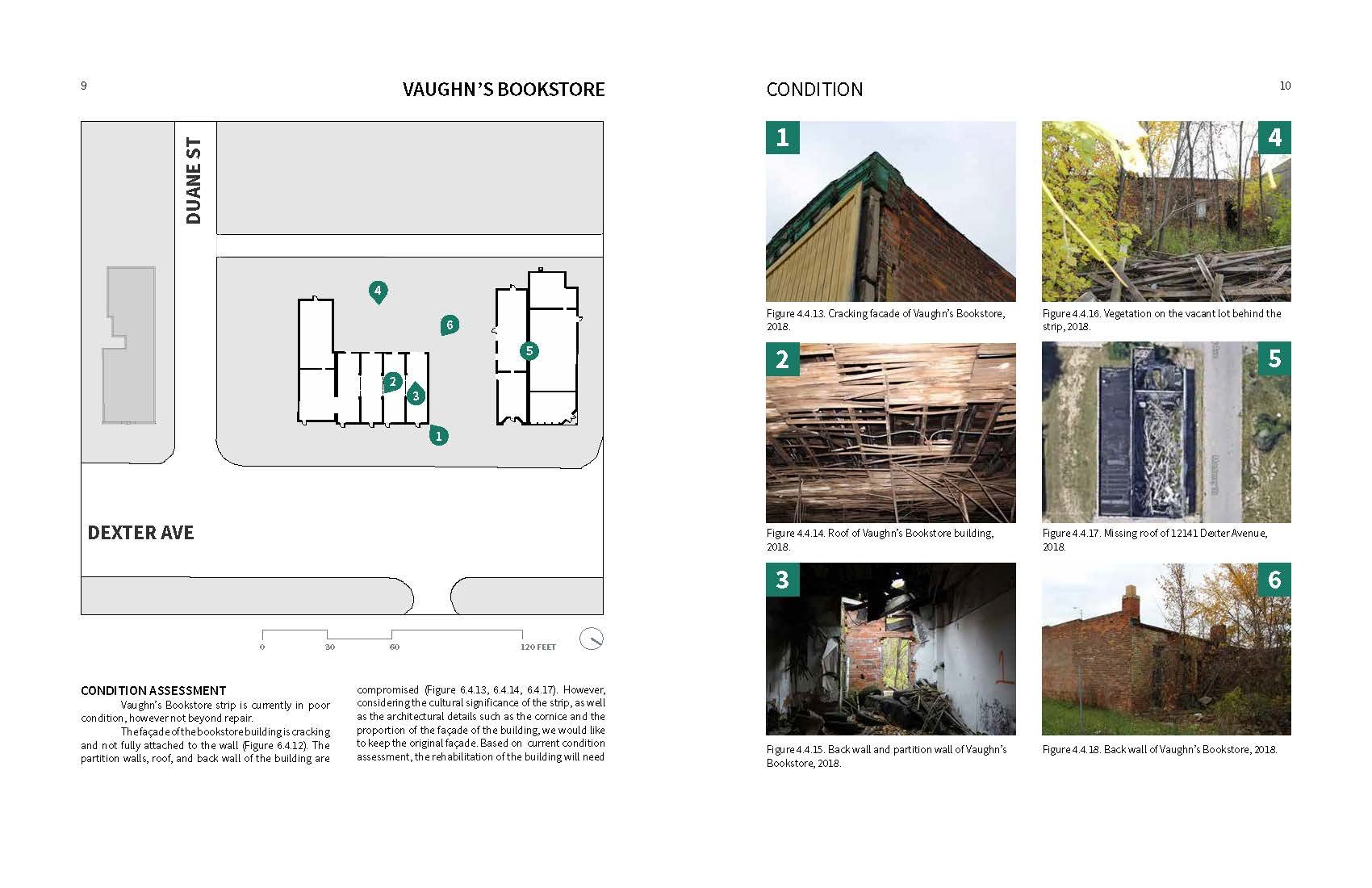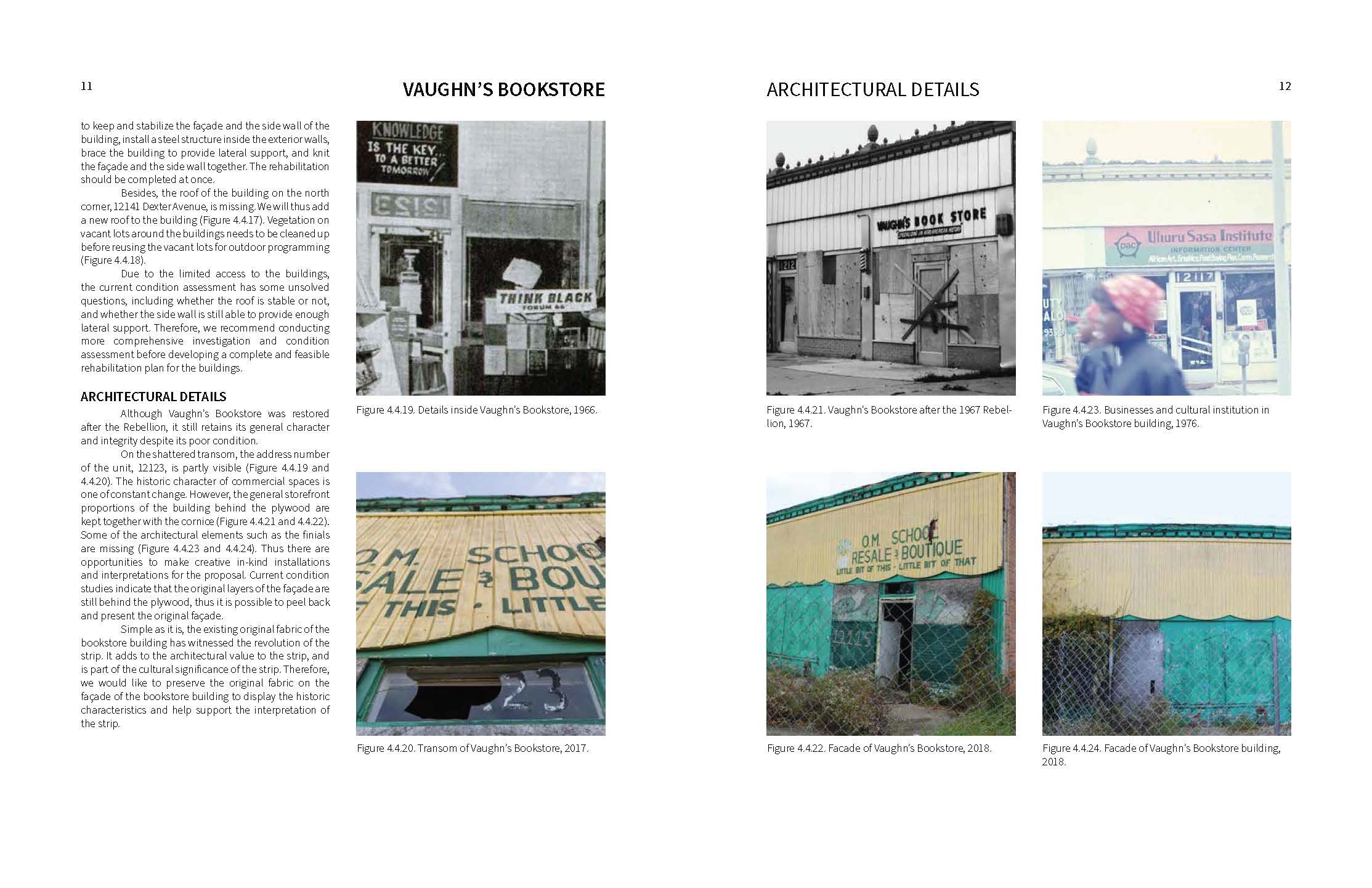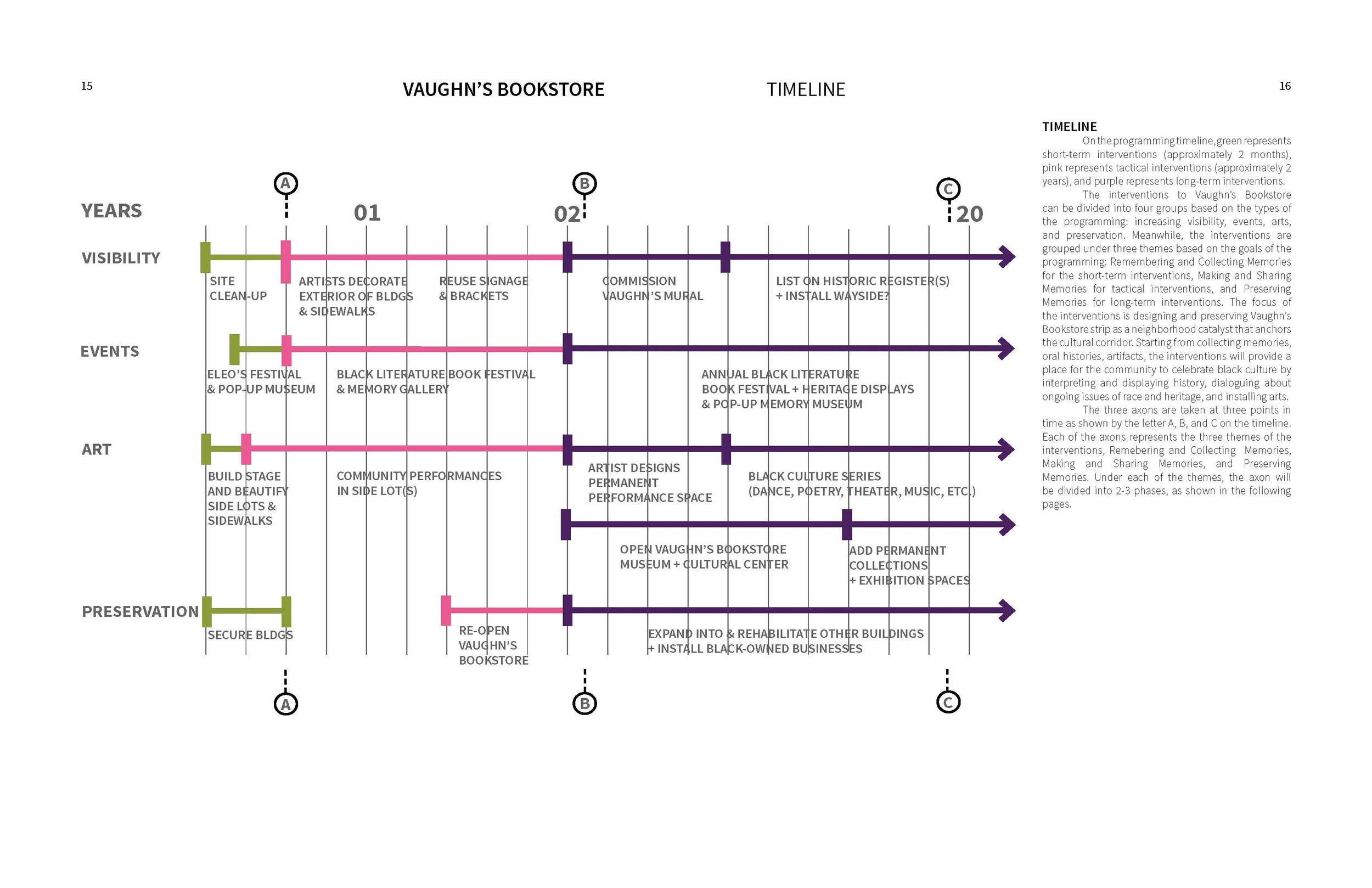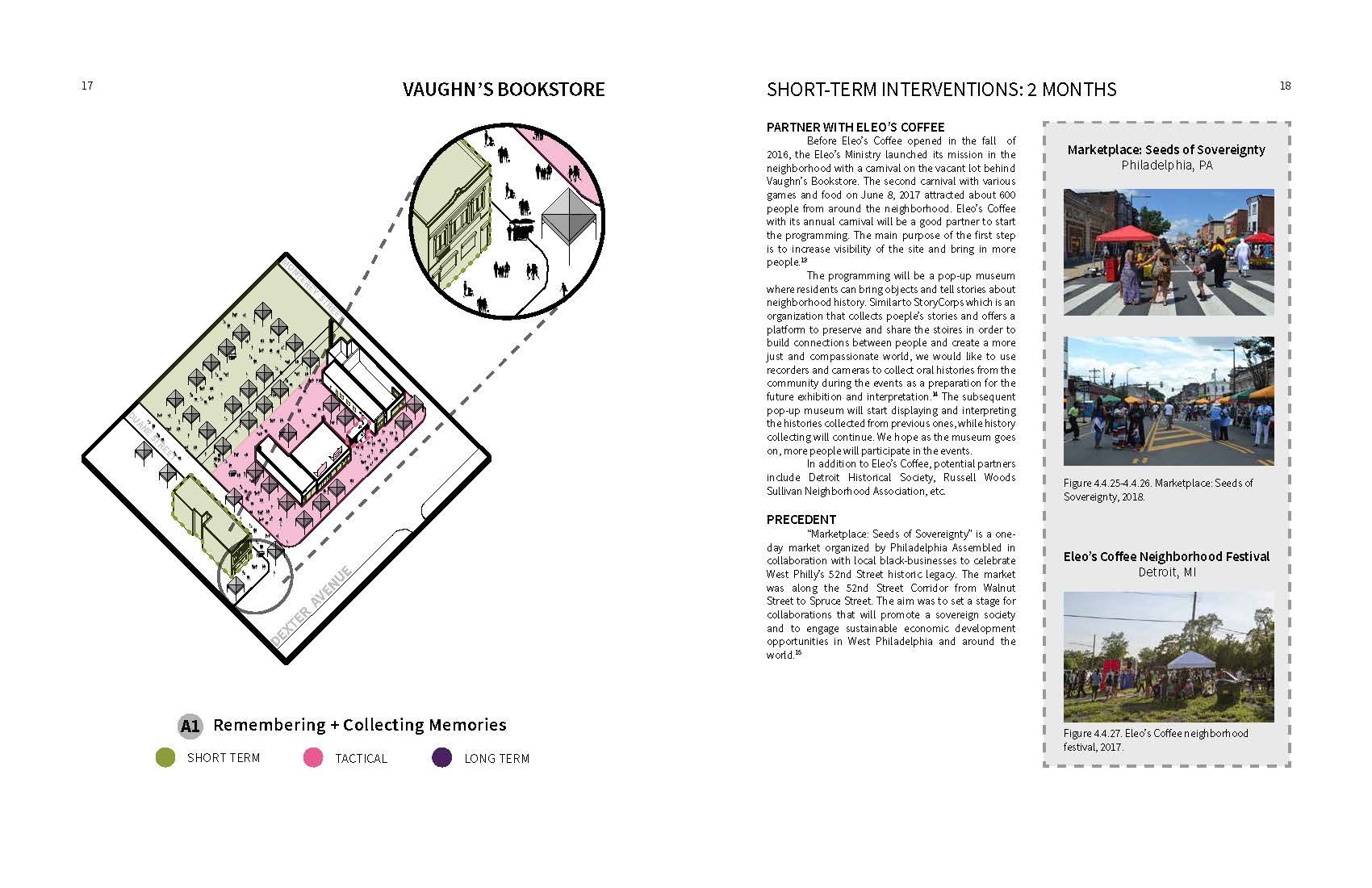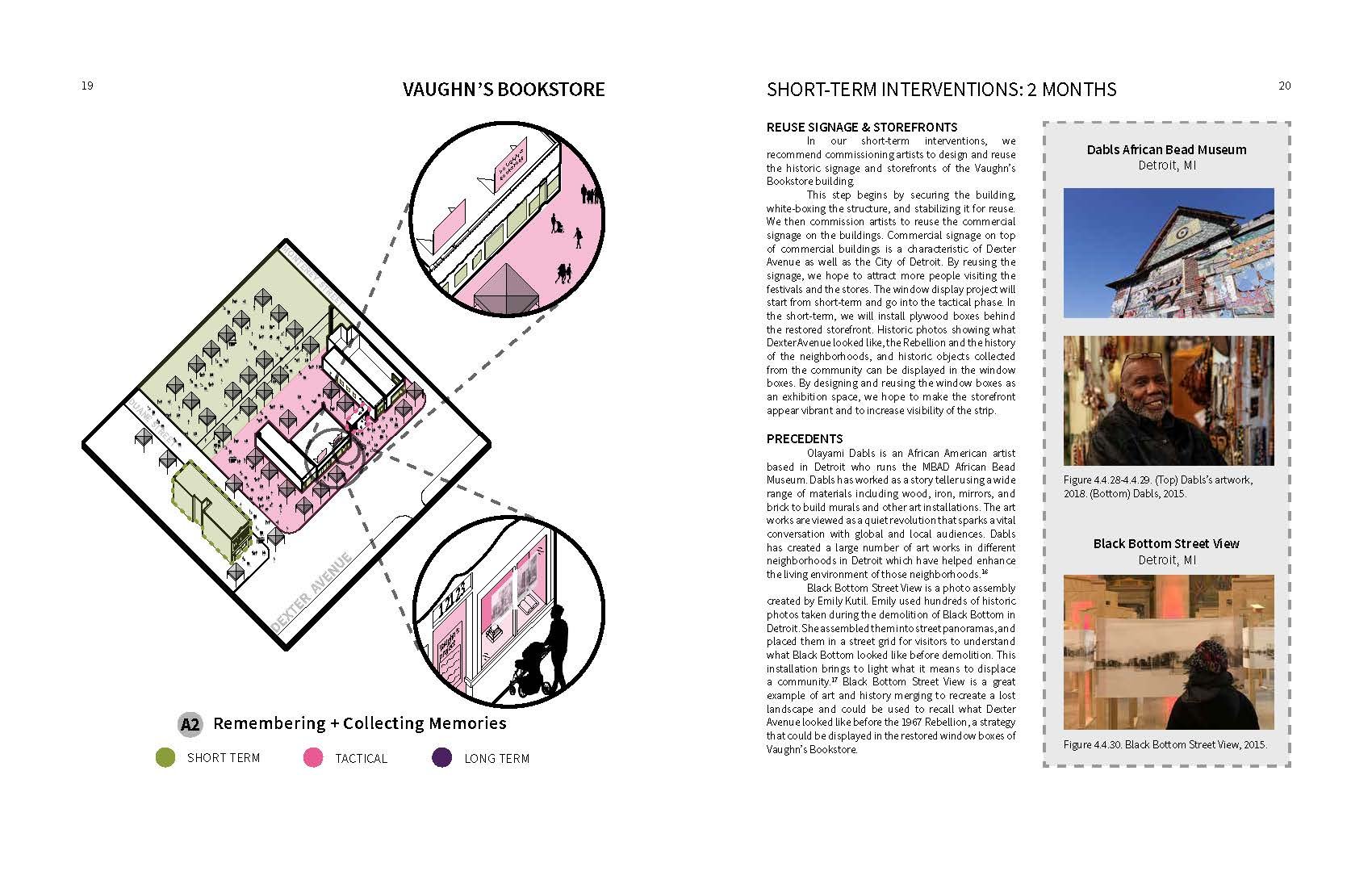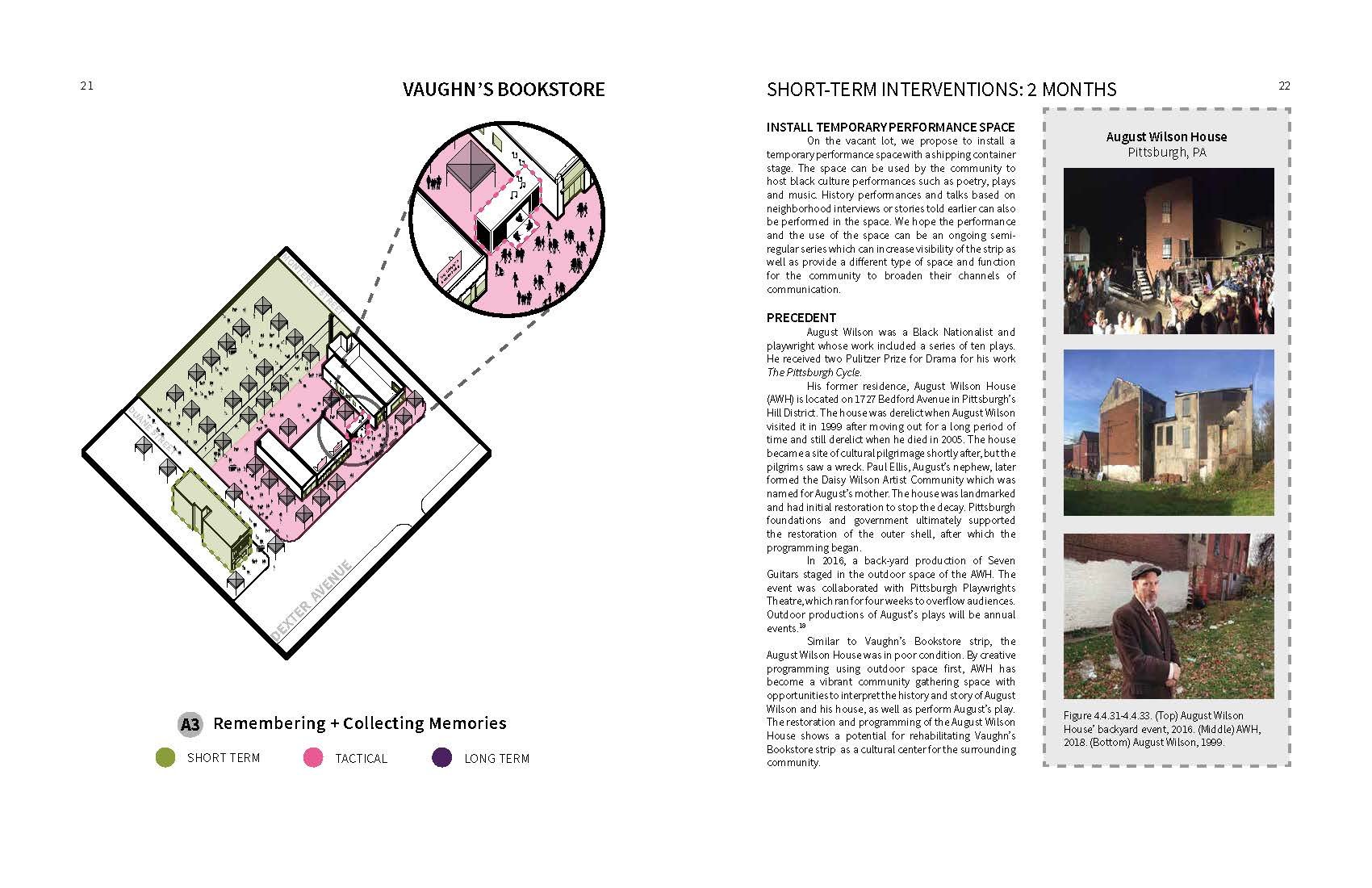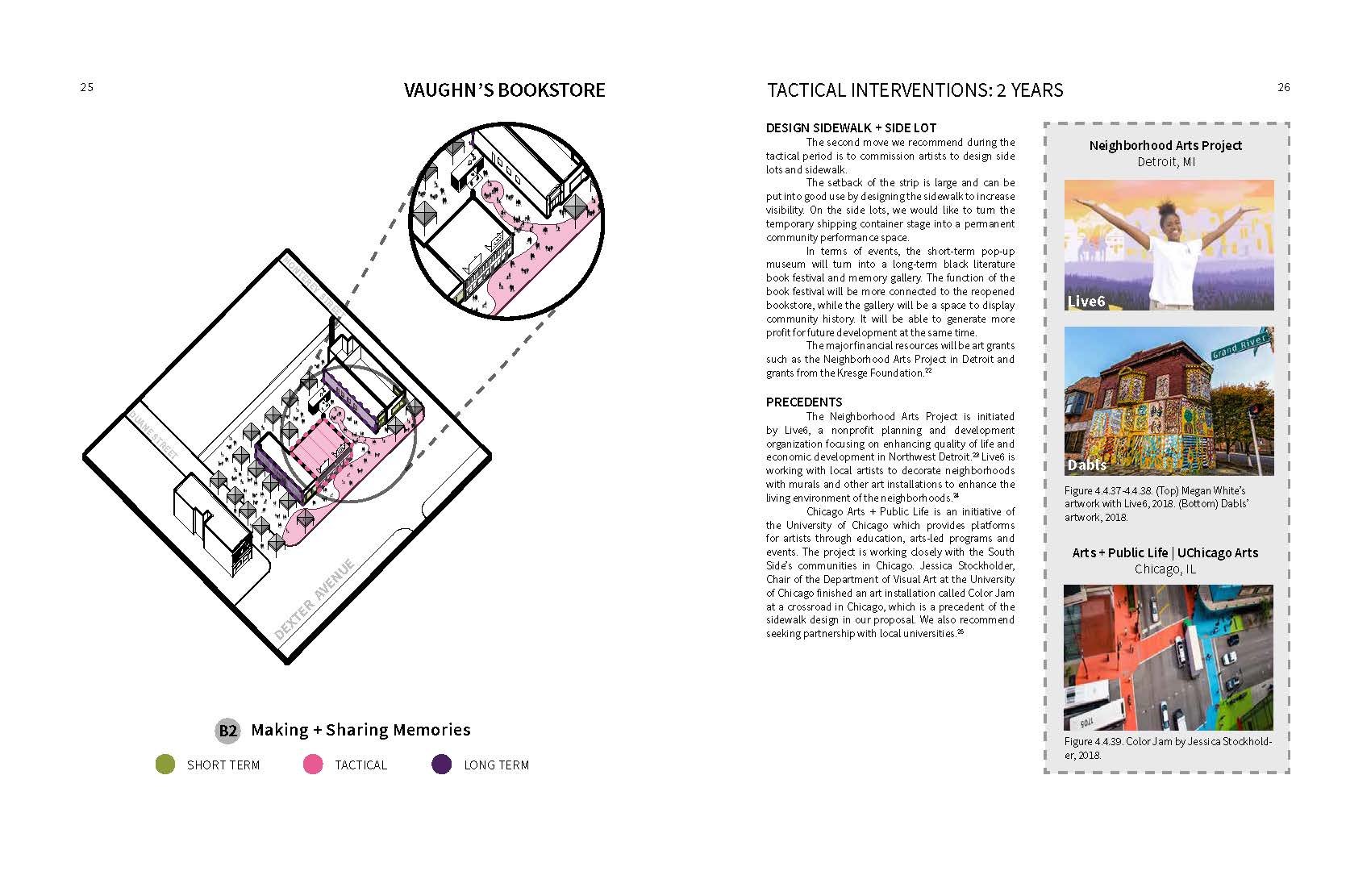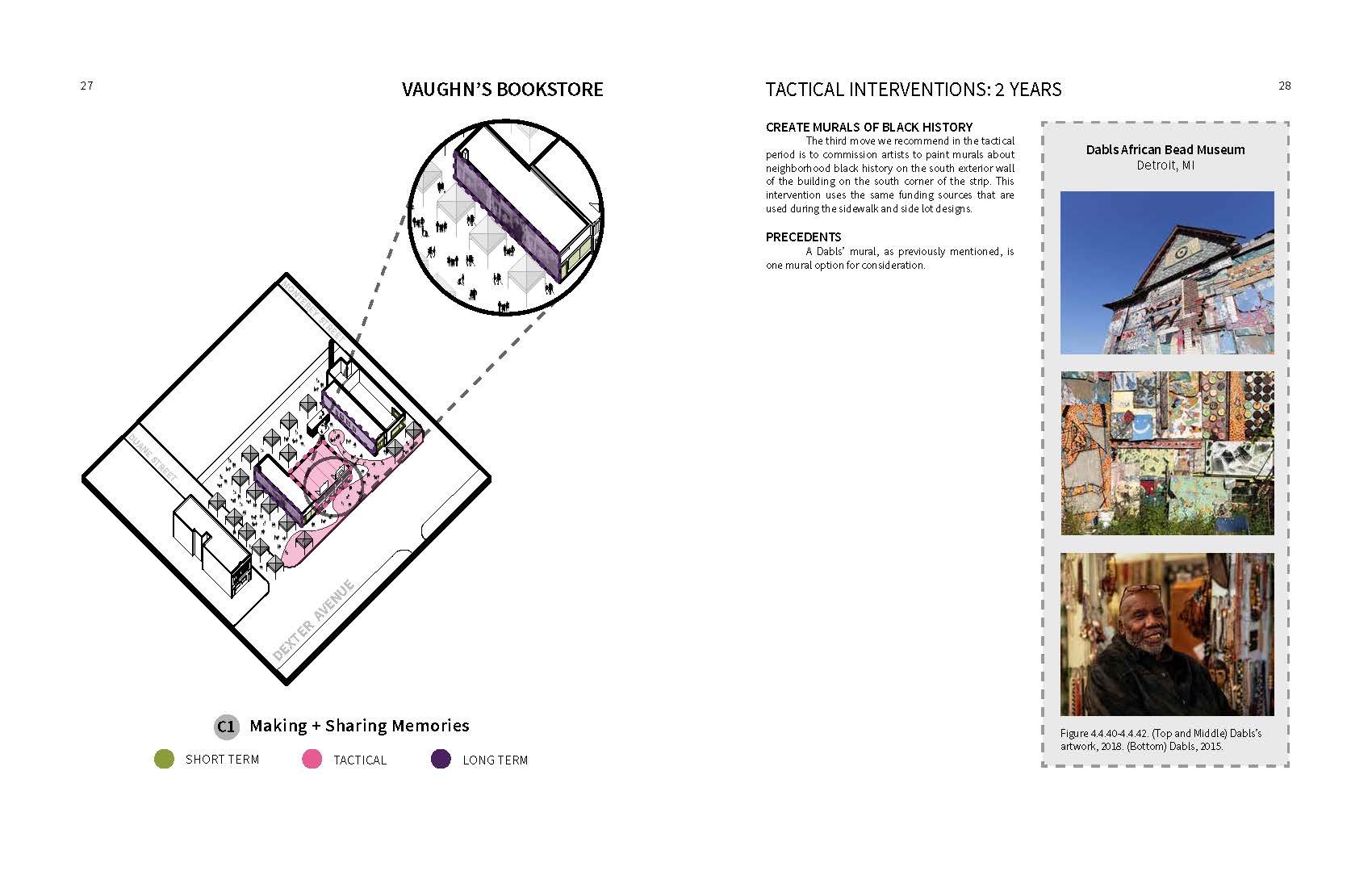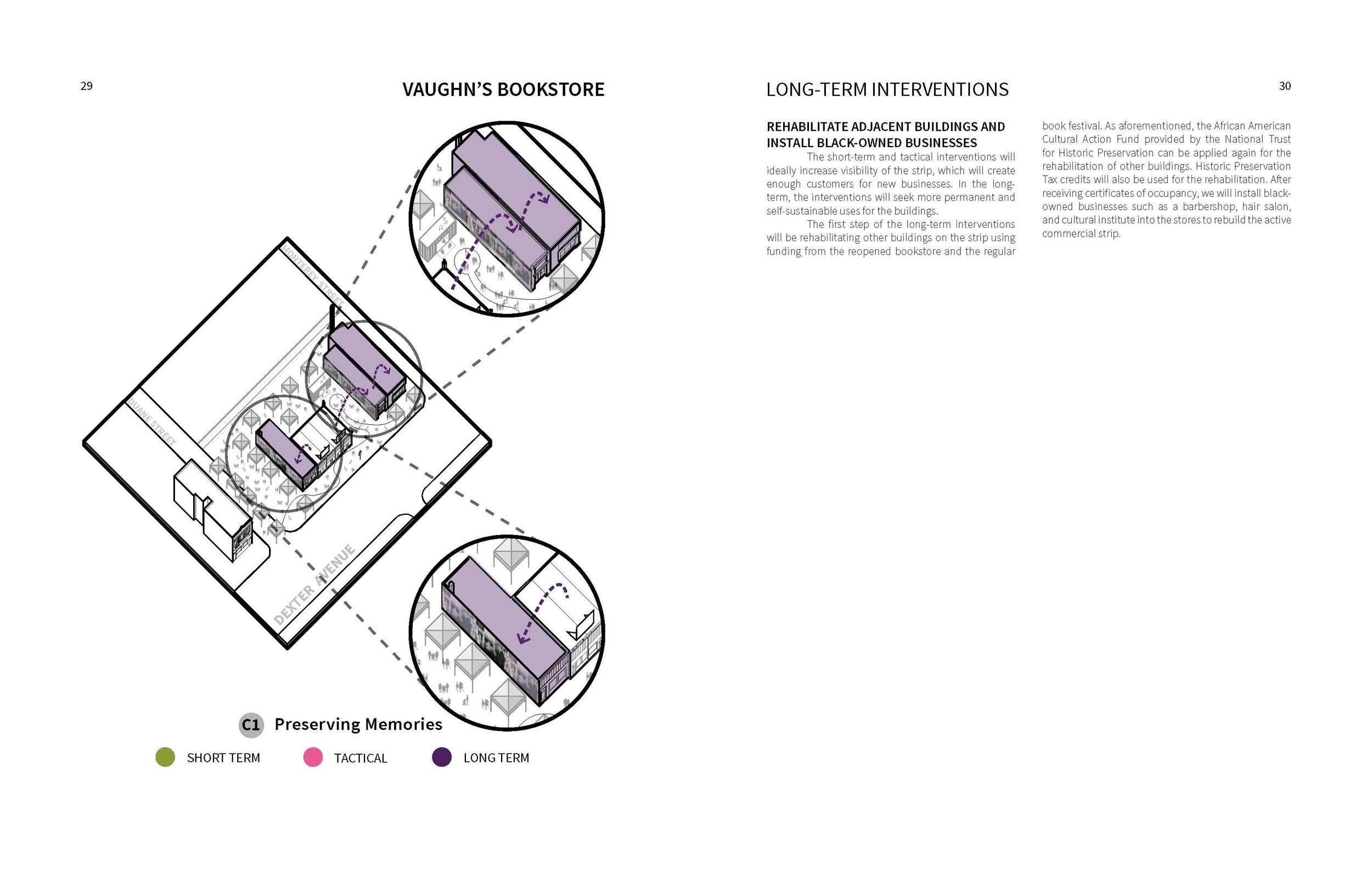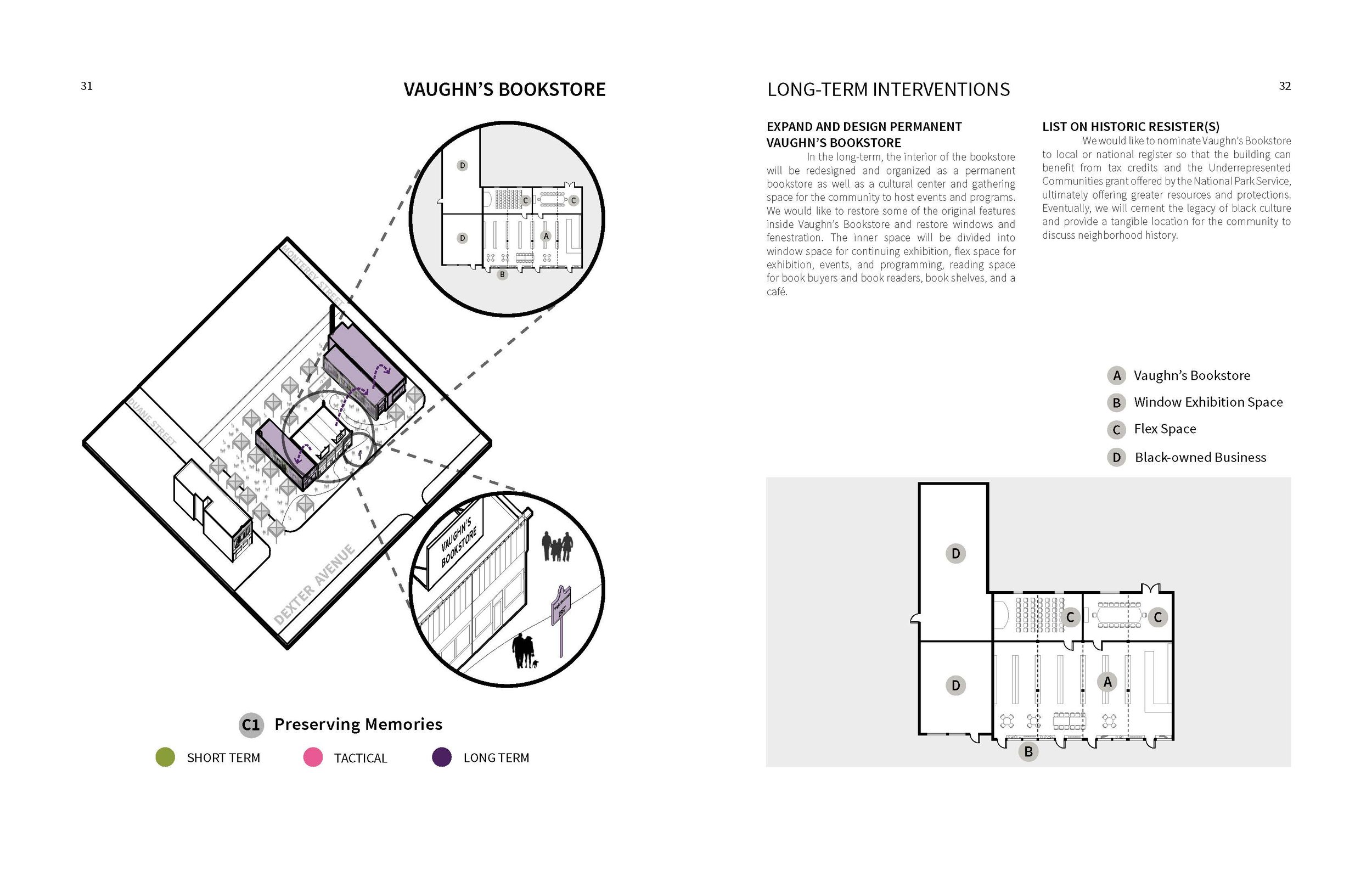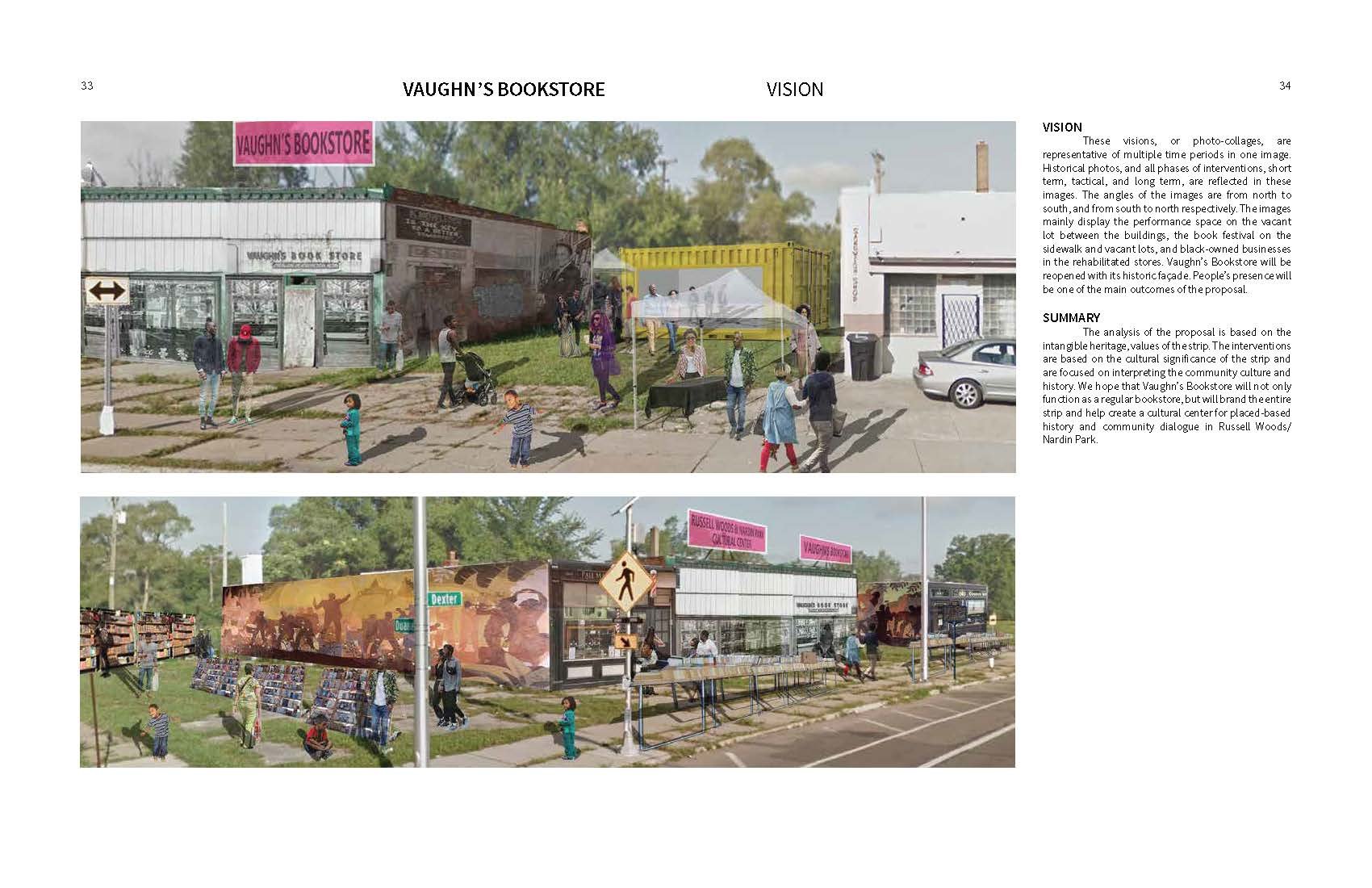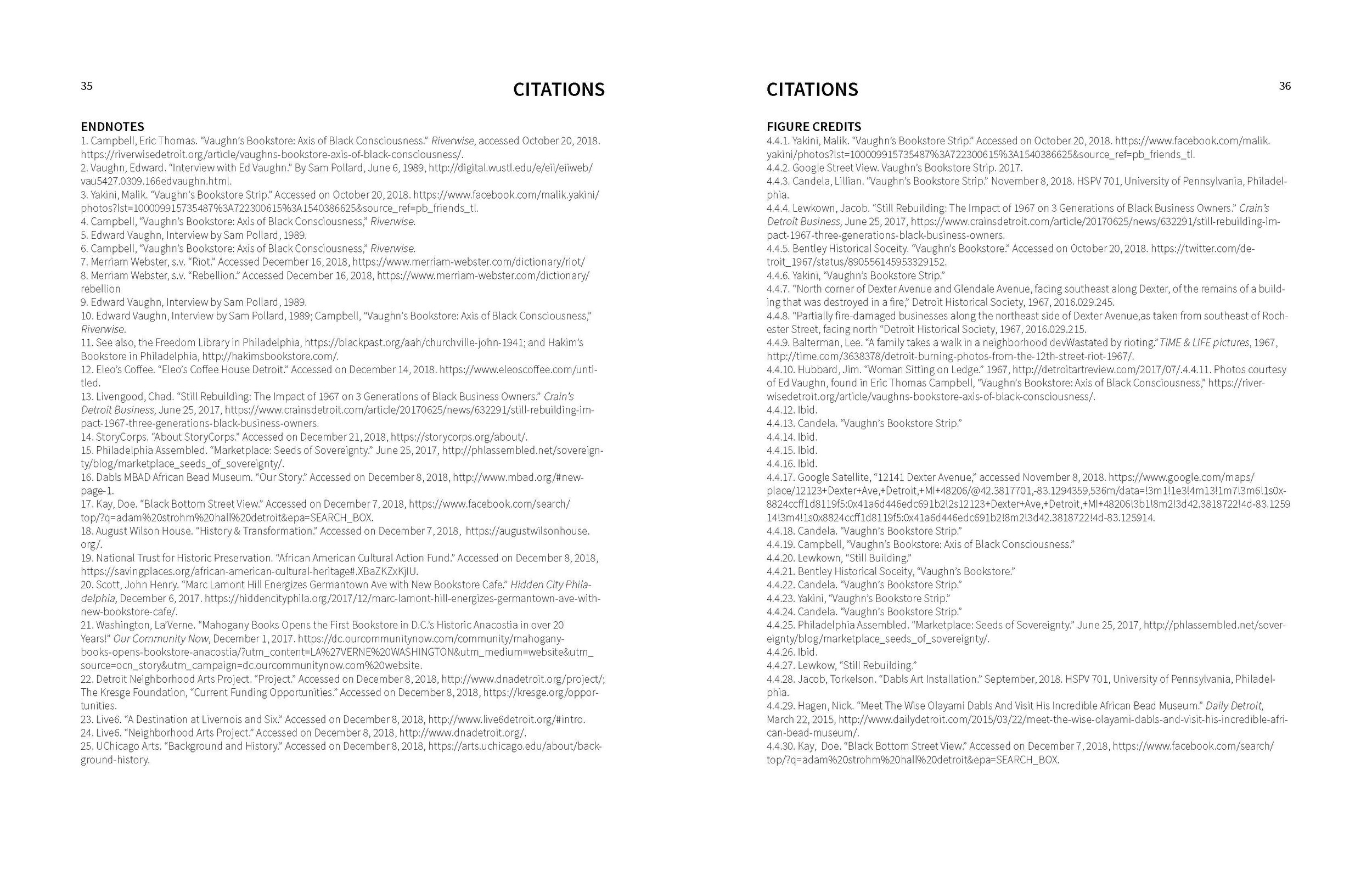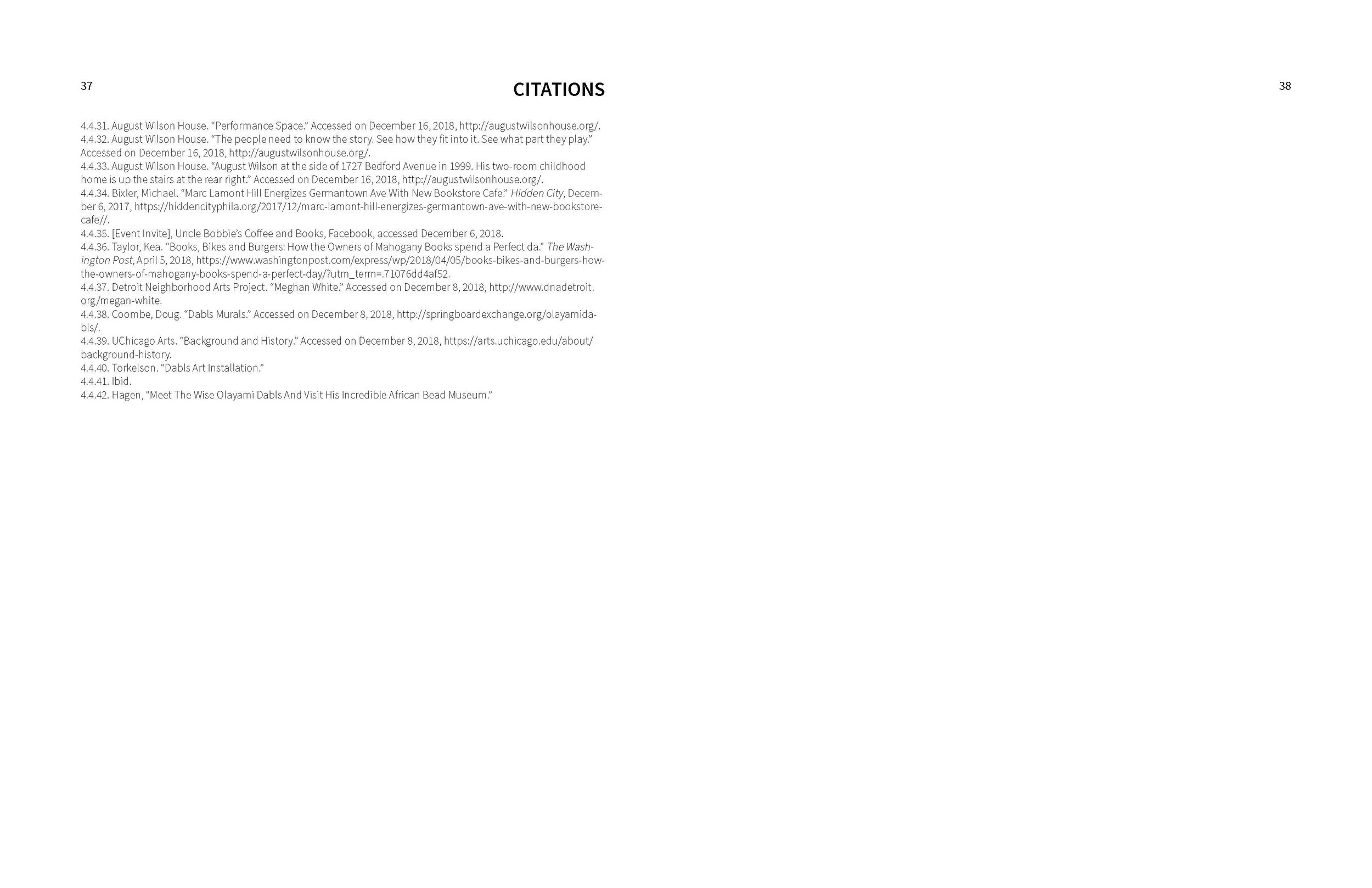vaughn’s bookstore: tactical preservation plan
Detroit, MI
Jake Torkelson + Ran Wei
(Full report below)
Vaughn’s Bookstore was a historically Black-owned business corridor. The bookstore was operated from 1962 to the late-1970s by Edward Vaughn. The bookstore sold Black literature, hosted events on Black culture, and was a gathering place for Black Liberation Politics. The 1967 Rebellion heavily affected the bookstore and it closed shortly after.
The following is a preservation plan and proposal for the future of the site. The interventions are broken down into three phases: short term (green), tactical (pink), and long term (purple). To see the whole project, check out the Issuu publication below.
Vaughn’s Bookstore after the 1967 Rebellion (Bentley Historical Society).
Businesses and cultural institutions in the Vaughn’s Bookstore building, 1976 (Photo from Malik Yakini).
Vaughn’s Bookstore was a center for Black culture and a meeting place for Black liberation politics in the 1960s and 1970s. Historically, the commercial strip that included Vaughn’s had many different uses. At its height, in the 1960s and 1970s, it was a thriving Black-owned commercial corridor consisting of Vaughn’s Bookstore, a cultural institute, a church, a barbershop, and a beauty salon. Ed Vaughn, the founder of Vaughn’s bookstore sold held discussions about race, politics, and Black history at his store. During the 1967 Rebellion, the bookstore and other nearby Black businesses were heavily damaged by what many believe to be intentional police retaliation, directed at centers of Black life.
Today, the strip is in poor condition and vacant. Despite their poor state of repair, this strip holds immense cultural significance within the history and culture of the surrounding neighborhoods and within Detroit at large. It retains good integrity in architectural features and general commercial storefront proportions. It is located on the west side of Dexter Avenue, on the modern boundary between the neighborhoods of Russell Woods and Nardin Park.
Timeline
On the programming timeline, green represents short-term interventions (approximately 2 months), pink represents tactical interventions (approximately 2 years), and purple represents long-term interventions.
The interventions to Vaughn’s Bookstore can be divided into four groups based on the types of the programming: increasing visibility, events, arts, and preservation. Meanwhile, the interventions are grouped under three themes based on the goals of the programming: Remembering and Collecting Memories for the short-term interventions, Making and Sharing Memories for tactical interventions, and Preserving Memories for long-term interventions. The focus of the interventions is designing and preserving Vaughn’s Bookstore strip as a neighborhood catalyst that anchors the cultural corridor. Starting from collecting memories, oral histories, artifacts, the interventions will provide a place for the community to celebrate Black culture by interpreting and displaying history, dialoguing about ongoing issues of race and heritage, and installing arts.
The three axonometric drawings are taken at three points in time as shown by the letter A, B, and C on the timeline. Each of the axons represents the three themes of the interventions, Remembering and Collecting Memories, Making and Sharing Memories, and Preserving Memories. Under each of the themes, the axon will be divided into 2-3 phases, as shown in the following pages.
Site
Ed Vaughn inside his bookstore, 1966 (Negro Digest).
Vision
These visions, or photo collages, are representative of multiple time periods in one image. Historical photos, and all phases of interventions, short term, tactical, and long term, are reflected in these images. The angles of the images are from north to south, and from south to north respectively. The images mainly display the performance space on the vacant lot between the buildings, the book festival on the sidewalk and vacant lots, and Black-owned businesses in the rehabilitated stores. Vaughn’s Bookstore will be reopened with its historic façade. People’s presence will be one of the main outcomes of the proposal.
Conclusion
The analysis of the proposal is based on the intangible heritage, values of the strip. The interventions are based on the cultural significance of the strip and are focused on interpreting the community culture and history. We hope that Vaughn’s Bookstore will not only function as a regular bookstore, but will brand the entire strip and help create a cultural center for placed-based history and community dialogue in Russell Woods/ Nardin Park.

